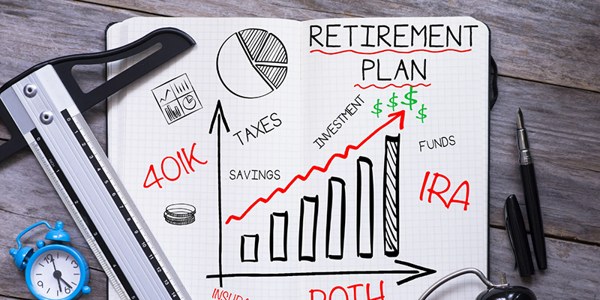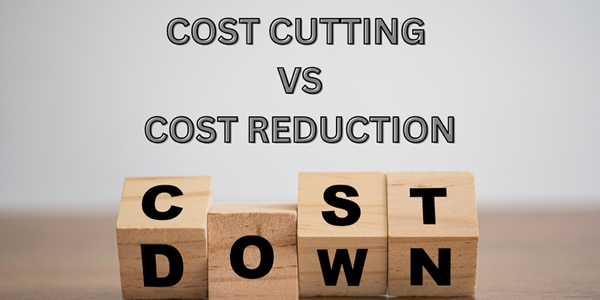Best Ways To Save For Retirement Guide
How much should you save for your retirement? Are you ahead of the game, or are you falling behind? Many people deride retirement planning because they think they have enough time. The truth is that waiting can cost you thousands; the earlier you start, the easier it becomes.

The good news is that you don't have a high salary or a finance degree to build a robust retirement fund. With the best personal finance strategies in place, small actions today can lead to a comfortable, stress-free future.
So, how do you save for retirement the smart way? Let’s break it down.
1. Max Out Employer Contributions
Max out any 401(k) or other retirement plan through your employer that matches contributions. These unrestricted funds translate into faster savings for retirement. For instance, if your company matches 100% of your contributions up to 5% of your salary, that means by contributing 5% at least, you have doubled the amount.
This is an instant and risk-free return. If you do not contribute as needed to get the entire match, you leave money on the table, growing it for your future.
Cumulatively, these contributions with compound interest can significantly increase retirement savings over the years. If you're unsure about the amount your employer offers in matching funds, you may check with HR and adjust your contributions.
Don't worry if you are self-employed—there are also options. You can save even more while taking advantage of SEP IRA or Solo 401(k) tax benefits. These are some of the best personal finance tips for independent workers looking to build a solid retirement fund.
2. Open An IRA for Tax Advantages
Even if you have your 401(k), it opens an additional personal finance benefit: Individual Retirement Accounts (IRAs). These have tax advantages that help your money grow faster.
There are two main types:
• Traditional IRA – Contributions are tax-deductible, reducing your taxable income now. You’ll pay taxes later when withdrawing funds in retirement. This is an excellent option to lower your current tax bill.
• Roth IRA – You pay taxes upfront, but your money grows tax-free, and withdrawals in retirement are also tax-free. This is one of the best personal finance strategies for those who expect to be in a higher tax bracket in retirement.
If you are income-qualified, consider establishing a Roth IRA and your employer-sponsored plan. Having income from multiple sources in retirement gives you added flexibility and financial safety.
3. Automate Your Savings
One of the easiest and best ways to save for retirement is to make saving automatic. When you set up automatic transfers, you don’t have to think about it—it happens without effort.
Ways to automate savings:
• Set up a direct deposit into your retirement account
• Increase contributions automatically whenever you get a raise
• Use spare-change investing apps that round up purchases and invest the difference
The little money, say $50 per month, will add up as time passes because of compounding effects. Another top Personal Finance tip includes treating your retirement savings as a bill. In the same way you pay rent and bills each month, treat it as a "payment to oneself" by putting money into the retirement fund.
Start small if you ever feel like you can’t afford to save. Even 1% of your income is better than nothing. As you get used to saving, increase it little by little.
4. Cut Expenses And Invest The Difference
You can save for retirement very successfully without earning a six-figure salary. One of the smartest, best personal finance strategies that can help you is to reduce expenses that aren't necessary and channel that money into your future.

Look at your spending habits and ask yourself:
• Do you have unused subscriptions you can cancel?
• Are you eating out too often instead of cooking at home?
• Can you shop smarter using discounts and cashback apps?
• Is your car payment eating up too much of your budget?
Now, please take the free money and deposit it into your retirement account. This strategy's money management benefits include lower financial Stress and a larger safety net during retirement.
If you cut just $100 per month in unnecessary spending and invest it with an average 7% return, you could have over $120,000 in 30 years. Small changes today can lead to big rewards in the future.
5. Invest Smartly For Long-Term Growth
Saving isn't enough; it must also be invested wisely. A savings account is safe but will not significantly grow your wealth. A solid retirement fund can be built on long-term investments that work.
Some of the best personal finance strategies for investing include:
• Investing in index funds – Low-cost funds that follow the market and provide steady returns.
• Diversifying your investments – Don't put all your money in one place; mix stocks, bonds, and mutual funds.
• Reinvesting dividends – Let your earnings compound over time
If you start investing early, even with small amounts, compound interest will work in your favour. For example, investing just $200 monthly with a 7% return could grow to over $500,000 in 40 years.
If you’re unsure where to start, consider a target-date retirement fund. These funds adjust risk levels as you approach retirement age, making them a simple yet effective option.
Take Action Now—Your Future Self Will Thank You
There’s no perfect time to start saving—the best time is now. Even if you start later than
you’d like, small changes today can lead to a more secure future.
The personal finance benefits of early planning include financial freedom, less Stress, and the ability to retire comfortably.
Don’t wait for the “right moment.” The sooner you start, the more you’ll benefit from compound interest, employer contributions, and smart investing. If you feel overwhelmed, start small and build from there.
Take control of your financial future now. Use this "Best Ways to Save for Retirement" guide to make your retirement years the best time.